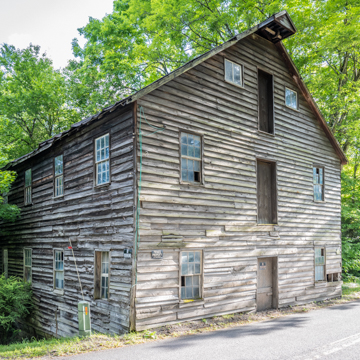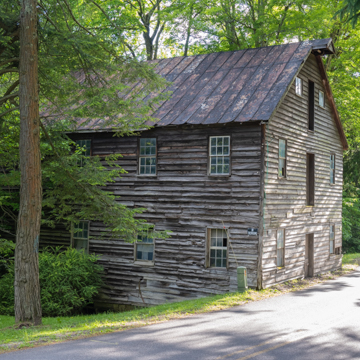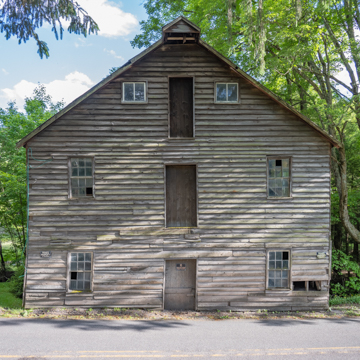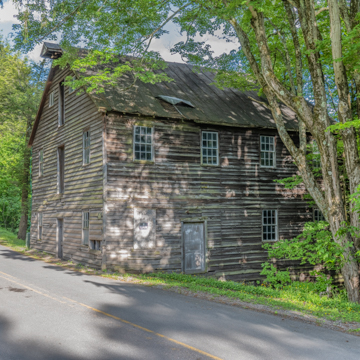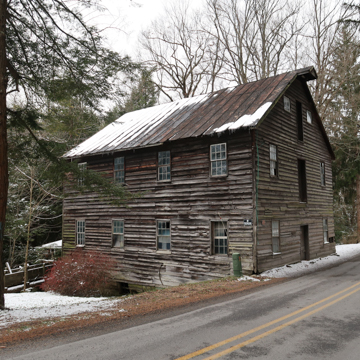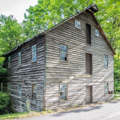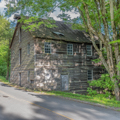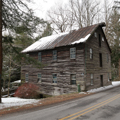Kaese Mill, built by a miller who emigrated from Germany, is now a rare survivor of the once-plentiful gristmills erected in Garrett County between the 1860s and the 1920s. With a large portion of the county’s residents engaged in grain farming, mills served as a necessary component of the local economy and as the focal point for town development. Of the two dozen mills that once stood in nearby towns, only this mill and Stanton’s Mill still stand.
Kaese Mill is a gabled-front, frame, water-powered mill, banked into the hillside along Bear Creek, where the wood flume and millrace are still extant. Its original wood overshot wheel was replaced c. 1900 by an iron wheel manufactured by the Fitz Water Wheel Company of Hanover, Pennsylvania. This mill was the last fully operational water-powered gristmill in Maryland, remaining in use by Kaese’s descendants until recent decades. The interior amazingly retains its nineteenth- and early-twentieth-century milling equipment including stone burrs, steel rollers, sifters, grain chutes, hoppers, and scale. As a center of economic and social activity in this sparsely populated, self-sustaining agrarian community, Kaese Mill also served as the local post office, meeting place, and exchange point for bartered goods.


